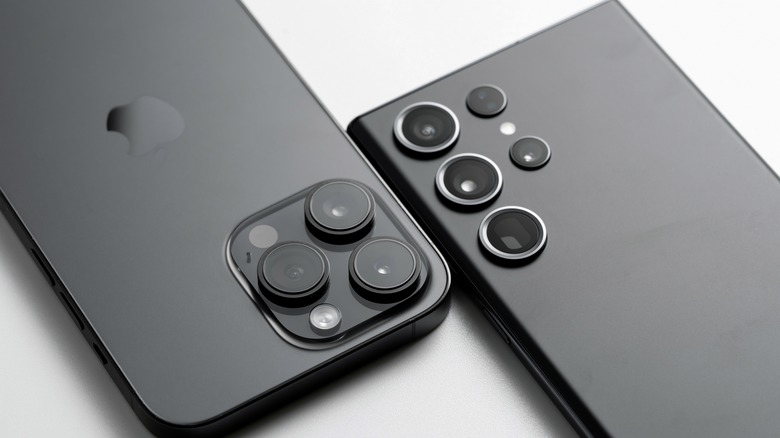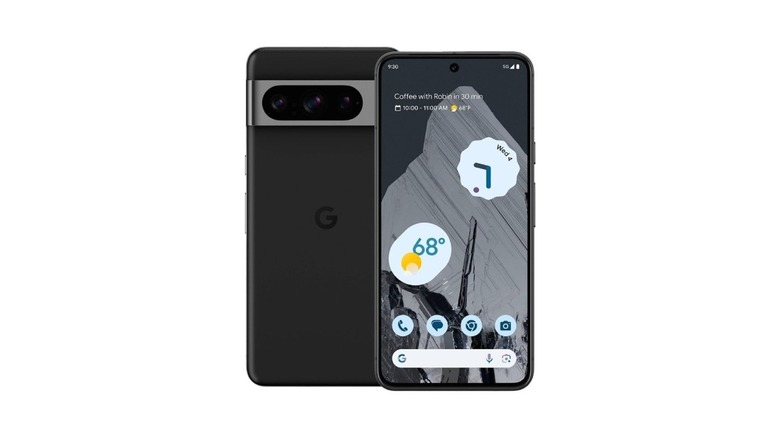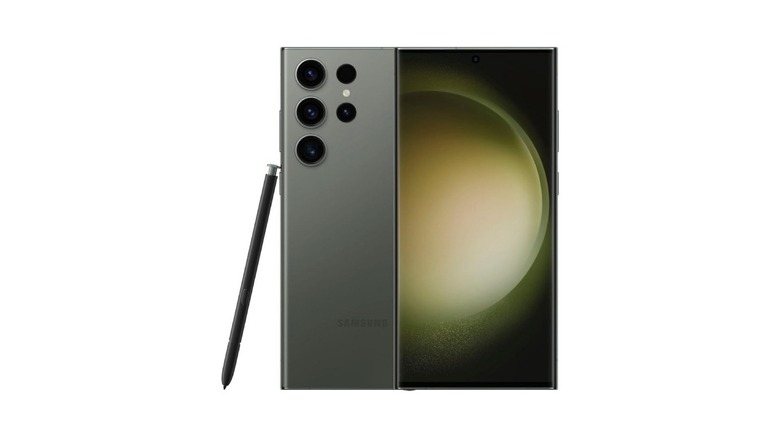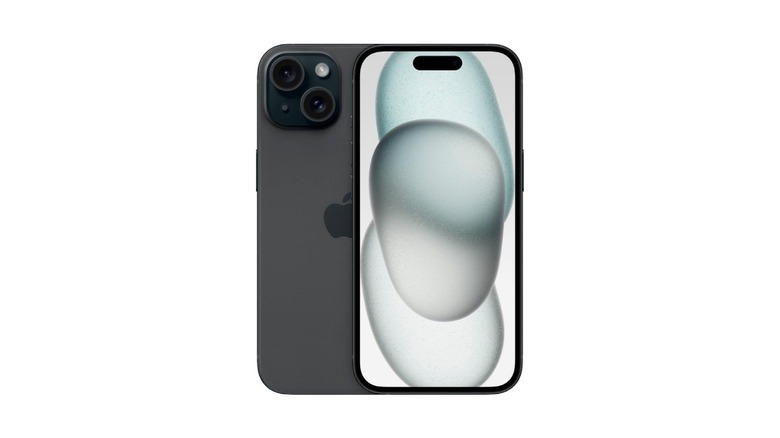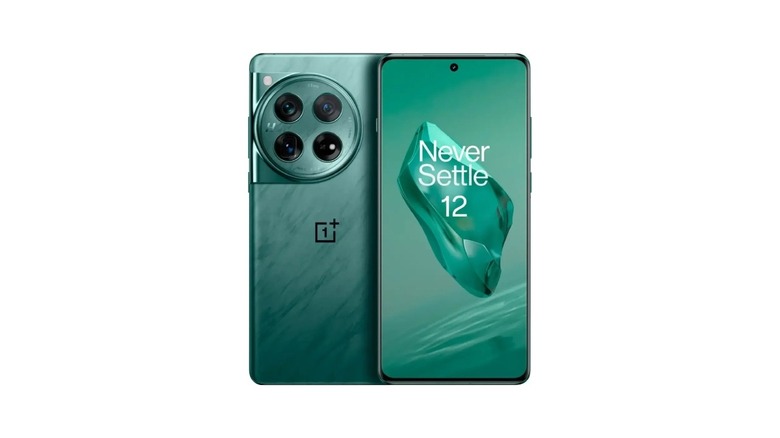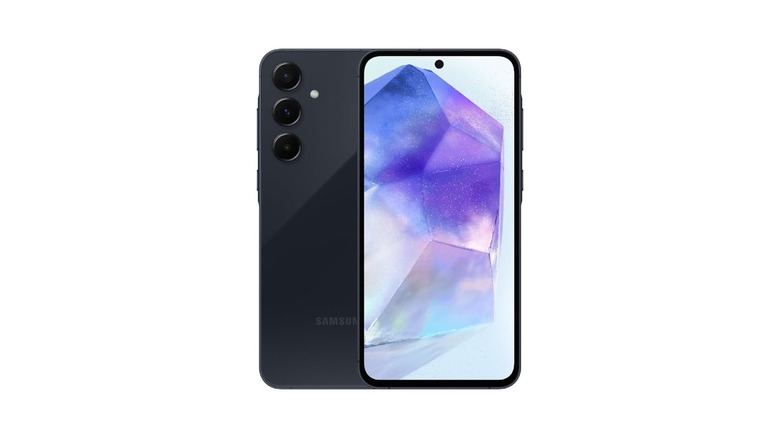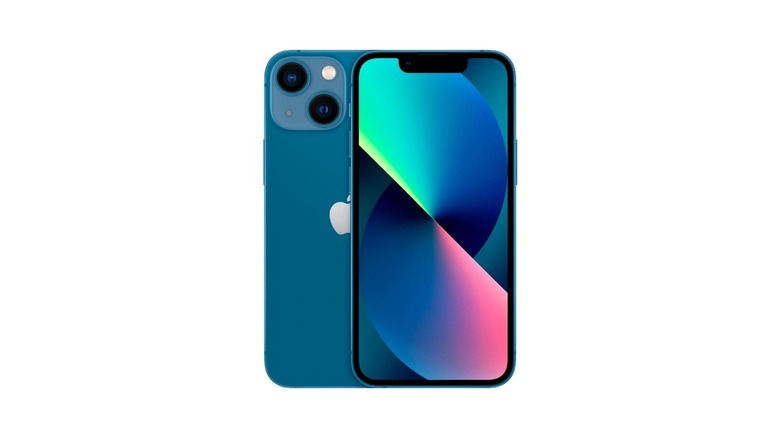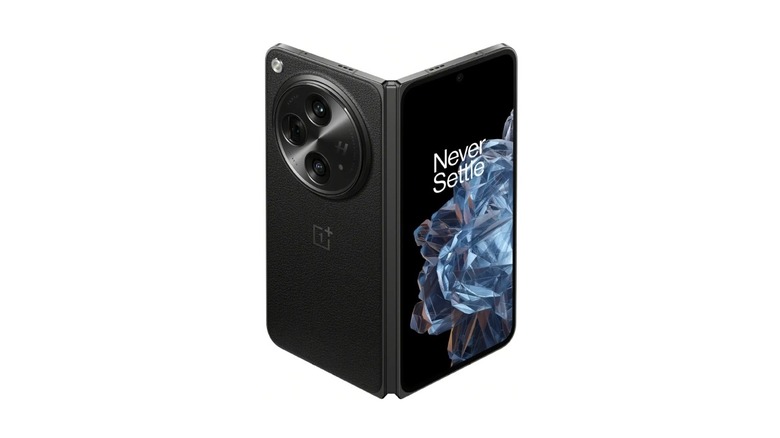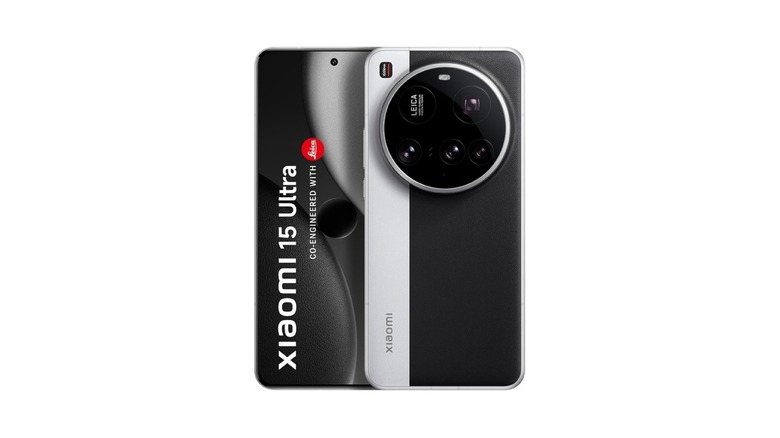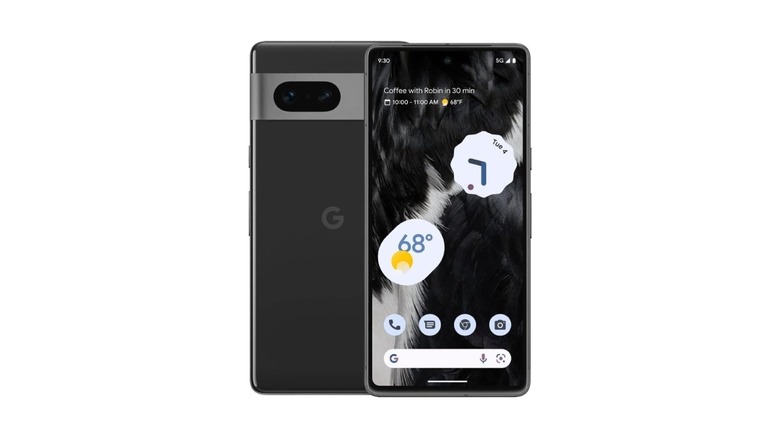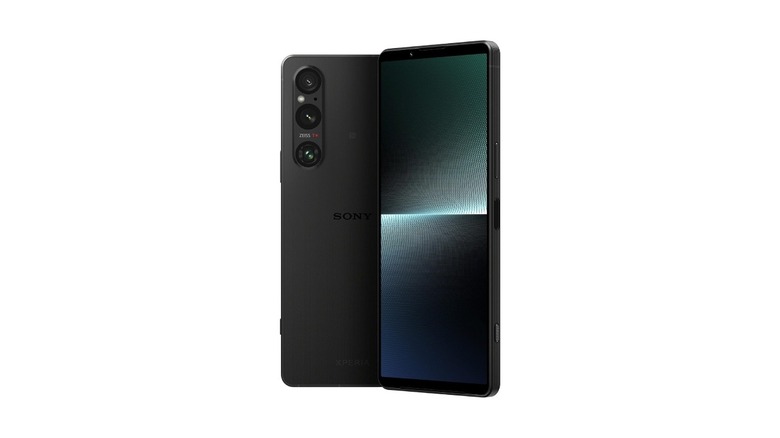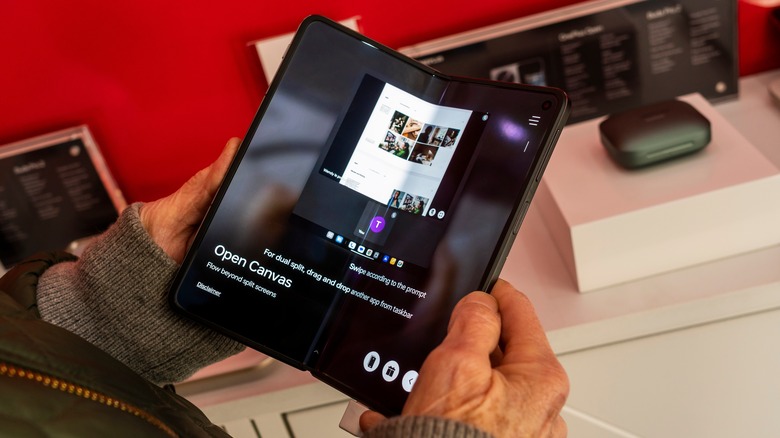10 Phone Models Worth Buying Used
We may receive a commission on purchases made from links.
Smartphones are getting increasingly expensive every year, thanks to inflation and rising component costs. As a result, a top-of-the-line flagship from most mainstream brands will set you back at least $1,000 — a price that's rather high for most consumers. Owing to this, used smartphones are generally a good way to get your hands on the latest tech — without paying top bucks. It's also a smart way to get a better phone for your budget. For instance, you can pick up last year's flagship in used condition for about $600 instead of buying a brand-new mid-range device from the current year, and the flagship will, more often than not, outperform the mid-ranger in every department. Additionally, purchasing a used device contributes to the environment by reducing e-waste and generating less plastic and paper.
Considering these benefits, you may be inclined to pick up a used or refurbished smartphone instead of a brand-new one. But since there are a ton of options in the market, you may be confused about which phone to choose. With smartphones, there's unfortunately no such thing as one size fits all. Everyone has different requirements for their devices. Photography enthusiasts may want a phone with a great camera, while those who consume a lot of media would prefer the best screen. So, we've put together a list of the best smartphones that are worth buying used. We've recommended options that cater to a wide range of users with different priorities. We've also made sure to include phones across various price points to ensure there's something for everyone.
Google Pixel 8 Pro
If you're looking for a smartphone that provides a clean and smooth Android experience with all the latest features that Google has to offer, the last-gen Pixel 8 Pro is a fantastic pick even in 2025. The primary reason for this is Google's extended software support. Google promised seven years of updates and security patches for the Pixel 8 series, which means it's slated to receive updates until 2030. That makes it the phone with the longest software support on this list. What this means for the end consumer is that they will keep receiving new features that are part of the latest Android versions, while also ensuring their phones remain secure and protected against any vulnerabilities.
Apart from updates, a big reason for recommending the Pixel 8 Pro is that it's a solid smartphone that gets most things right. It has an impressive set of cameras, a large and bright display with a 120Hz refresh rate, reliable battery life, and a processor that's slightly underpowered but handles most day-to-day tasks without breaking a sweat. Notably, the Pixel 8 Pro isn't a great option for smartphone gamers or those who regularly perform demanding tasks like video editing on the fly. That said, if you occasionally edit photos and videos and primarily use regular apps for social media and streaming, you shouldn't have any issues. Not to forget, Google's AI suite is among the best in the industry.
Samsung Galaxy S23 Ultra
Another smartphone that absolutely nails the basics and has a lot going for it is the Samsung Galaxy S23 Ultra. Despite being two years old, the design still turns heads thanks to a massive display that stretches from edge to edge. Speaking of the display, the Galaxy S23 Ultra has one of the best screens on a smartphone. It can go head-to-head with phones launched in 2025, and even come out on top on several occasions. If you watch a lot of movies and shows on your phone, you can't go wrong with the S23 Ultra. You also get an S Pen that can be used to write notes, scribble, or even take pictures — something that even the latest Galaxy S25 Ultra cannot do.
Apart from the display, the Snapdragon 8 Gen 2 chipset powering the S23 Ultra still holds its own, managing to run everything thrown at it. Samsung's One UI software is also among the best in the industry. There are four cameras on the rear — the primary one being a 200MP unit. The highlight, though, is the 10x shooter — allowing you to click faraway subjects like wildlife and landscapes. Finally, there's a large 5,000mAh battery that can easily get you through an entire day's usage. For around $500, the Galaxy S23 Ultra trumps pretty much any new mid-range phone from 2025. It's one of the most well-rounded phones you can buy.
Apple iPhone 15 and 15 Pro
Several users may specifically want an iPhone for various reasons. It could be for iMessage, the Apple ecosystem, or the ease of use, since they may have already been using an iPhone for a long time. If that's you, the iPhone 15 — despite being close to two years old at this point — is a good option. The compact size means you don't have to play finger gymnastics when using the phone in one hand. This is also applicable to its elder sibling — the iPhone 15 Pro — yet another excellent option if you're looking for a premium used iPhone. Both the iPhone 15 and 15 Pro have capable processors that can handle intensive tasks, including heavy gaming. Both phones also have reliable battery life that can get through a day's use.
Apple has been at the forefront of providing long-term software support, which is a big reason behind recommending the iPhone 15 series. Notably, the standard iPhone 15 does not get Apple Intelligence introduced with the iPhone 16. However, this isn't a deal-breaker since Apple Intelligence doesn't add much value in its current state. The iPhone 15 Pro, on the other hand, has support for AI, so if that's important to you, you'll have to splurge on the more expensive model. Of course, that also gets you additional perks such as an extra telephoto camera and a ProMotion display for a smoother experience.
OnePlus 12
OnePlus has traditionally been a brand that makes flagship phones that undercut the competition in terms of pricing. The OnePlus 12, at the time of launch, was no different. It has a Snapdragon 8 Gen 3 chipset, which is mighty powerful, making it the perfect device for mobile gamers. It's the most powerful smartphone on this list, so it's also going to age better with time. Apart from the SoC, the rest of the package is equally impressive: a large, bright display with a 120Hz smooth refresh rate, a triple-camera setup with impressive image output, and a massive 5,400mAh battery that refuses to die. Plus, it's also extremely quick to charge, making it an endurance champion.
Over the years, OnePlus' OxygenOS software has also matured quite a lot and is now among the best Android skins out there. Coupled with the specs on paper, the OnePlus 12 is easily among the best value flagships available. It not only nails the performance but also offers a reliable set of cameras, excellent battery life, and a smooth software experience — making it a no-brainer for under $500. OnePlus has promised four years of Android version updates and five years of security patches, so the OnePlus 12 is also relatively future-proof. If you're looking for a do-it-all smartphone that doesn't break the bank, the OnePlus 12 is the way to go. It's arguably one of the best phones from the brand to date.
Samsung Galaxy A55
Up until now, all options mentioned above hover around the $500 ballpark. However, if you want something more affordable, the Samsung Galaxy A55 is a good pick, typically priced between $200 and $300. One look at the Galaxy A55 and you'll instantly notice the standout design. It looks similar to the more expensive Galaxy S25, making it one of the most premium-looking smartphones in its price range. The same triple-camera layout from the flagships has made its way to the affordable lineup, and so has the display with the hole-punch cutout. Of course, the performance isn't going to be anywhere close to the "S" series, thanks to the underpowered Exynos chipset, but that's what you expect from phones in this price range.
That's not to say the Galaxy A55 cannot handle day-to-day tasks. It does so without much effort, but be ready to face minor hiccups and slowdowns from time to time, especially when editing photos or multitasking. Samsung has a newer version of this phone — the Galaxy A56 — which is more or less similar to last year's A55, which itself is rather similar to the Galaxy A54. So, if you're planning to pick up a mid-ranger from Samsung, we'd highly recommend saving some money and getting the Galaxy A55 instead. You can use the excess funds to pick up some handy accessories for your Android phone.
Apple iPhone 13 mini
Close to four years after launch, the iPhone 13 mini is still the only mini phone you can buy. This makes it an automatic selection for a phone you can buy used — of course, only if you're specifically fond of small phones that are easy to use with a single hand. Most phones nowadays are large and borderline unwieldy, so if you want a departure from that, the iPhone 13 mini is the way to go. Despite being rather old at this point, it's still capable enough to run most day-to-day apps. The cameras have also held up well, although they may not have the best software features or even a telephoto camera that's now common even in the mid-range segment.
Since it's an iPhone, and Apple is known to push out updates for a long duration, you can expect the iPhone 13 mini to receive at least two more iOS updates — which is commendable for a phone launched in 2021. The only potential downside of the iPhone 13 mini is its battery life. Due to the tiny form factor, it has a small cell that may not last an entire day. So if you decide to get the phone, ensure you plug it in whenever you see a charger nearby, probably in your car or on a MagSafe mount on your work desk. It's worth noting that we're recommending the iPhone 13 mini purely for its size. The standard iPhone 13 isn't a worthy purchase in 2025.
OnePlus Open
Folding phones are an absolute godsend for those who do any sort of serious work on their smartphones. The extra screen real estate is certainly helpful for running multiple apps side by side. If you're leaning toward a foldable for this specific reason, you may feel spoiled for choice — especially in the second-hand market, since there are a bunch of older foldables from Samsung that you can pick up for a relatively low price. However, we would recommend skipping all of those and opting for the OnePlus Open. The first foldable from OnePlus absolutely nailed the basics of a good phone, from impressive cameras to stellar performance. It also has one of the best form factors of any folding phone — with an outer screen that's similar to a conventional phone.
The highlight, however, is that massive internal screen. OxygenOS on the OnePlus Open makes good use of the large display by allowing you to run multiple apps at once in resizable windows. Despite being a powerhouse, the OnePlus Open also has good battery life while maintaining a slim form factor. This is what makes it an arguably better option compared to Samsung's foldables. Like most folding phones, the OnePlus Open was quite expensive at the time of launch. However, you can now find a used one for around $600-800, which is a solid price for what it offers.
Flagships from Vivo, Oppo, and Xiaomi
Thanks to carrier lock-ins and the dominance of brands like Samsung and Apple, Chinese OEMs like Xiaomi, Vivo, and Oppo unfortunately don't have any presence in the U.S. market. However, these brands are truly pushing the envelope when it comes to using the latest technology in their smartphones. The Xiaomi 15 Ultra, for instance, has a massive 1-inch camera sensor that's part of a camera setup developed in partnership with Leica. The Vivo X200 Ultra has a 35mm primary lens and a huge 200MP telephoto camera that takes some of the best portrait photos on a smartphone. Then there's the Oppo Find X8 Ultra, which also takes imaging to a whole new level. It's not just about the cameras — these phones also have Silicon Carbon batteries that allow brands to increase capacity to upwards of 6,000mAh.
Considering these factors, phones like the Xiaomi 15, 15 Ultra, Vivo X200 Pro, X200 Pro Mini, X200 Ultra, Oppo Find X8, Find X8 Pro, Find X8 Ultra, and others are fantastic purchases, if you can find a used one on eBay or similar platforms. Notably, these smartphones are also more affordable compared to top-of-the-line flagships from Apple or Samsung, so a used one should be even more budget-friendly. They're surely hard to find, but if you do, they offer better value and superior specifications compared to mainstream flagships.
Google Pixel 7
Here's another flagship phone that's now available at an extremely low price. The Pixel 7 has Google's Tensor G2 chipset, which isn't the most powerful SoC out there. That said, it's definitely going to perform better than any budget-oriented smartphone around the $200 price point. Moreover, the software experience it provides is far superior to anything else in its price range. The cameras are excellent, the display is beautiful, and the compact form factor ensures the phone is comfortable to hold and use. Google has promised five years of Android updates and security patches with the Pixel 7 — three of which are still pending. Again, that's more than any other phone in this price range offers.
If you're looking for a phone with a good software experience, reliable cameras that still take good photos, and one that'll last you a few years — all without burning a hole in your pocket — Google Pixel 7 is the perfect choice. It's also a good option for parents looking to get their children their first phone and don't want to spend too much. Battery life is one factor that may be slightly concerning if you spend a lot of time on your phone. You also get a bunch of AI features tied to Google Gemini, and all the features that are part of the latest Android version will make their way to the Pixel 7.
Sony Xperia 1 V
Sony's smartphones cater to a specific niche of enthusiasts, meaning they're not the ideal option for the average consumer. This is primarily because the cameras aren't great if you're going to use the phone as a point-and-shoot. However, playing around with the Pro mode unlocks their true capabilities. Additionally, you can use Xperia phones as monitors for Sony cameras, which is yet another feature geared toward photographers and camera enthusiasts. Apart from that, the display's aspect ratio is also slightly different from what you'd see on a regular iPhone, as it's better suited for both media recording and consumption.
Other areas where the Xperia 1 V excels are the presence of a 3.5mm headphone jack, a removable microSD card slot, and a notch-free display without any interruptions. Not to forget, there's also a dedicated camera shutter button on the side — introduced well before Apple added the Camera Control key on the iPhone 16 series. A good reason to recommend the Xperia 1 V is that it isn't vastly different from the latest Xperia 1 VII. The core of the smartphone has remained largely unchanged, with Sony tweaking only minor aspects. If you're a camera enthusiast, listen to music via wired headphones, and want to expand your phone's storage — Sony's Xperia lineup is probably the only good option around.
How we picked the phones
Considering users have varied requirements, we've included a good mix of smartphones targeted toward different sets of users. For instance, the Sony Xperia 1 V and Xiaomi 15 Ultra are focused toward smartphone photographers, while the Galaxy S23 Ultra and the OnePlus Open are great choices for those who want to get serious work done on the go. Across the different options, though, there's one common theme — extended software support. When buying a used phone, it's vital to ensure that the device you're picking will continue to receive software updates and security fixes going forward. So, we've ensured that all the options in this list will get at least a few more years of software updates.
That said, it's best to pick a phone that's not more than two years old, as it will still offer recent specifications along with a few extra years of software support. Apart from that, it's also important to pay attention to the condition of the phone before buying it. We recommend buying used phones offline when possible, since you can inspect the condition of the device before purchasing it. If you're buying online, pay attention to the condition listed by the website. Amazon or Best Buy often marks listings as "Good" or "Fair" next to the phone model. Try opting for the best available condition, since it reduces the chances of physical damage.
